Treatments> Ophthalmology
At MEDVOYAGER, our ophthalmology department is dedicated to providing comprehensive eye care and advanced treatments for various eye conditions. Our team of experienced ophthalmologists and eye surgeons uses state-of-the-art technology to ensure the best outcomes for our patients.

A laser is used to reshape the cornea, allowing light to be properly focused onto the retina.

Quick recovery, reduced dependence on glasses or contact lenses, and improved vision.

Treatments include laser photocoagulation to seal leaking blood vessels, vitrectomy to remove blood and scar tissue from the eye, and injections of medications to reduce swelling.

Prevents vision loss, manages symptoms, and improves overall eye health.

The cloudy lens is removed using phacoemulsification (ultrasound) or laser-assisted technology, and an intraocular lens (IOL) is implanted.

Restores clear vision, improves quality of life, and is a highly successful and common procedure.

Treatments include laser surgery to seal retinal tears, pneumatic retinopexy to reattach the retina using a gas bubble, and scleral buckle surgery to push the retina back into place.

Prevents permanent vision loss, restores normal retinal function, and maintains eye health.

Treatments include medicated eye drops, laser therapy (trabeculoplasty), and surgical procedures (trabeculectomy or shunt implantation) to reduce intraocular pressure.

Prevents further optic nerve damage, preserves vision, and manages intraocular pressure.

Involves adjusting the muscles around the eyes to align them properly.

Improves eye alignment and coordination, enhances binocular vision, and boosts confidence.

The vitreous gel is removed and replaced with a saline solution to treat conditions like retinal detachment, vitreous hemorrhage, and macular holes.

Restores vision, prevents complications, and treats severe eye conditions effectively

The outer layer of the cornea is removed, and a laser reshapes the underlying corneal tissue.

Effective for patients with thin corneas, improves vision, and reduces dependence on glasses or contacts.

A small incision is made, and a lenticule (small piece of corneal tissue) is removed to reshape the cornea.

Less invasive, quick recovery, and fewer side effects compared to traditional LASIK.

A femtosecond laser creates a thin flap in the cornea, and an excimer laser reshapes the cornea underneath.

High precision, quick recovery, and effective for a wide range of vision problems.

A collamer lens is inserted between the iris and the natural lens without removing any corneal tissue.

Suitable for patients with high refractive errors, preserves the natural lens, and provides excellent vision quality.

Uses detailed corneal topography maps to guide the laser in reshaping the cornea for precise vision correction.

Enhanced visual outcomes, reduced visual disturbances, and customized treatment for each patient.

MEDVOYAGER is a leading healthcare provider dedicated to offering a comprehensive range of medical and surgical treatments to enhance the well-being and quality of life for our patients. Our mission is to provide top-tier care by combining advanced medical technology, skilled professionals, and a patient-centered approach in a compassionate and welcoming environment.

MEDVOYAGER is a leading healthcare provider dedicated to offering a comprehensive range of medical and surgical treatments to enhance the well-being and quality of life for our patients. Our mission is to provide top-tier care by combining advanced medical technology, skilled professionals, and a patient-centered approach in a compassionate and welcoming environment.
MEDVOYAGER is a leading healthcare provider dedicated to offering a comprehensive range of medical and surgical treatments to enhance the well-being and quality of life for our patients. Our mission is to provide top-tier care by combining advanced medical technology, skilled professionals, and a patient-centered approach in a compassionate and welcoming environment.